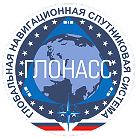Societal Influences
- See Full List of AI Topics -
 The NavStar Global Positioning System (GPS)
is a marvel of modern engineering, a satellite-based navigation system that provides
precise location and time information across the globe. The concept traces its origins
to the Cold War, with the first inklings appearing in the 1950s as scientists began
to experiment with satellite technology for tracking purposes. GPS as we know it
was proposed in the 1960s and achieved full operational capacity in the early 1990s,
though advancements continue to refine its accuracy and functionality. This is a
brief look at GPS's history, the organizations and individuals
instrumental to its development, operational details, frequencies, and related technologies,
along with a comparative look at other global navigation satellite systems (GNSS). The NavStar Global Positioning System (GPS)
is a marvel of modern engineering, a satellite-based navigation system that provides
precise location and time information across the globe. The concept traces its origins
to the Cold War, with the first inklings appearing in the 1950s as scientists began
to experiment with satellite technology for tracking purposes. GPS as we know it
was proposed in the 1960s and achieved full operational capacity in the early 1990s,
though advancements continue to refine its accuracy and functionality. This is a
brief look at GPS's history, the organizations and individuals
instrumental to its development, operational details, frequencies, and related technologies,
along with a comparative look at other global navigation satellite systems (GNSS).
Origins of GPS and Initial Concept
The foundational idea for GPS emerged from the exploration of radio-navigation
systems in World War II. In the 1950s, scientists at Johns Hopkins University's
Applied Physics Laboratory began experimenting with Doppler effects by tracking
the Soviet satellite Sputnik's radio signals as it orbited Earth. This led scientists
to theorize that they could determine the location of any object on Earth by knowing
the position of satellites and using Doppler shifts to calculate distances. Soon,
the U.S. Navy developed satellite systems like Transit, which could determine submarine
positions by receiving satellite signals. Although effective, these early systems
lacked the accuracy needed for precise military applications, propelling the Department
of Defense (DoD) to seek a more advanced, all-weather navigation system.
Key Figures and Organizations
The establishment of the GPS concept and its development to operational status
involved numerous U.S. agencies, including the DoD, the Air Force, and contractors
like Rockwell International and Lockheed Martin. Among the individuals involved
were Dr. Ivan Getting, who, as President of The Aerospace Corporation, significantly
influenced the program's design; Bradford Parkinson, often called the "father of
GPS," who led the initial deployment phase under the Air Force; and Roger Easton,
a Naval Research Laboratory scientist whose early work in satellite navigation laid
much of the groundwork. Their collaborative work in defining the satellite network
and developing control systems and onboard atomic clocks turned theoretical concepts
into practical technology.
Development and Deployment Timeline
- 1964: The U.S. Navy's Transit system becomes operational, providing
foundational research for GPS.
- 1967: Timation satellites, designed by Roger Easton, are launched
to test atomic clocks in space, a critical technology for GPS.
- 1973: The Department of Defense initiates the NAVSTAR GPS program,
with Bradford Parkinson as the project lead.
- 1978-1985: The first GPS Block I satellites are launched, allowing
testing of GPS's feasibility.
- 1983: After a Soviet fighter jet shoots down Korean Air Lines
Flight 007, killing 269 people, President Ronald Reagan offers GPS access to civilians,
propelling GPS as a dual-use technology.
- 1989: The first operational Block II GPS satellite is launched.
- 1995: The 24-satellite constellation achieves full operational
status.
- 2000: Selective Availability, which intentionally degraded
civilian accuracy, is disabled, allowing civilians access to high-accuracy GPS data.
- 2005-2016: Block IIR and IIF satellites are launched, enhancing
accuracy and reliability.
- 2018-present: Block III satellites, built by Lockheed Martin,
are launched, providing improved accuracy and anti-jamming capabilities.
Satellite Orbits, Frequencies, and Codes
GPS satellites orbit at approximately 20,200 kilometers (12,550 miles) above
Earth and complete an orbit every 12 hours. The constellation comprises at least
24 active satellites, ensuring global coverage. These satellites transmit signals
on multiple frequencies, primarily L1 at 1575.42 MHz and L2 at 1227.60 MHz, with
the L5 signal added later for civilian safety-of-life applications. GPS utilizes
two primary codes: the Precise (P) code for military use, encrypted as the P(Y)
code for security, and the Coarse/Acquisition (C/A) code, available to civilians.
The P-code is known for providing high precision to authorized users, while the
C/A code offers sufficient accuracy for most civilian purposes.
Ground Control Segment
The GPS ground control segment includes a network of monitoring stations and
antennas that maintain system integrity and accuracy. Managed by the 2nd Space Operations
Squadron (2 SOPS) of the U.S. Space Force, these ground facilities are located globally,
including sites in Hawaii, Colorado, Diego Garcia, Ascension Island, and Kwajalein
Atoll. Each station monitors satellite health, signals, and orbits, uploading corrective
data when needed. Large ground antennas transmit at high power to maintain communication
with satellites, and control equipment is designed for precision adjustments and
updates to satellite data.
Satellites, Launch Vehicles, and Manufacturers
Several companies have been involved in manufacturing GPS satellites, including
Rockwell International, Boeing, and Lockheed Martin. Early Block I satellites, built
by Rockwell, were followed by Block II and IIA satellites designed for operational
durability. Lockheed Martin currently produces Block III satellites, with enhanced
resistance to jamming and improved signal strength. Various launch vehicles, including
Delta, Atlas, and SpaceX's Falcon 9, have carried these satellites into orbit.
Receivers, Cellphone GPS, and Civilian Usage
GPS receivers have become ubiquitous, spanning aviation, marine navigation, and
terrestrial applications. Civilian receivers initially experienced degraded accuracy
due to Selective Availability, but after it was turned off in 2000, civilian GPS
accuracy improved to within a few meters. With smartphones, GPS receivers became
embedded in consumer devices, utilizing not only GPS but also Assisted GPS (A-GPS)
for faster location fixes by relying on nearby cell towers and Wi-Fi hotspots. Cellphone
GPS antennas are designed to work in compact devices while maintaining reliable
signal reception.
Competitors to GPS
Several other countries have developed GNSS systems to provide independent navigation
capabilities:
- GLONASS (Russia): Developed by the Soviet Union and maintained
by Russia, GLONASS offers global coverage and has been fully operational since 1996,
with periodic modernization.
- BeiDou (China): China's BeiDou Navigation Satellite System
(BDS) achieved global coverage in 2020, with ongoing upgrades for enhanced accuracy.
- Galileo (European Union): The EU's Galileo system offers civilian
and government services, with a fully operational constellation completed in 2020,
providing high-accuracy positioning across Europe.
- IRNSS (India): The Indian Regional Navigation Satellite System
(IRNSS), or NavIC, covers the Indian subcontinent and surrounding areas.
- QZSS (Japan): Japan's Quasi-Zenith Satellite System (QZSS)
augments GPS, offering better coverage and accuracy within Japan.
GPS has transformed from a strategic military tool into a global asset for civilian
and military users alike. Through decades of development, cooperation, and innovation,
it has become integral to navigation, communication, timing, and countless applications
in modern society. The competition among GNSS systems only heightens the significance
of satellite-based navigation, ensuring continued advancements in accuracy, accessibility,
and reliability for users worldwide.
 This content was generated by primarily
the ChatGPT (OpenAI), and/or
Gemini (Google), and/or
Arya (GabAI), and/or
Grok (x.AI), and/or DeepSeek artificial intelligence (AI) engine.
Some review was performed to help detect and correct any inaccuracies; however,
you are encouraged to verify the information yourself if it will be used for critical
applications. In some cases, multiple solicitations to the AI engine(s) was(were) used to assimilate
final content. Images and external hyperlinks have also been added occasionally.
Courts have ruled that AI-generated content is not subject to copyright restrictions,
but since I modify them, everything here is protected by RF Cafe copyright. Many
of the images are likewise generated and modified. Your use of this data implies
an agreement to hold totally harmless Kirt Blattenberger, RF Cafe, and any and all
of its assigns. Thank you. Here are the major categories. This content was generated by primarily
the ChatGPT (OpenAI), and/or
Gemini (Google), and/or
Arya (GabAI), and/or
Grok (x.AI), and/or DeepSeek artificial intelligence (AI) engine.
Some review was performed to help detect and correct any inaccuracies; however,
you are encouraged to verify the information yourself if it will be used for critical
applications. In some cases, multiple solicitations to the AI engine(s) was(were) used to assimilate
final content. Images and external hyperlinks have also been added occasionally.
Courts have ruled that AI-generated content is not subject to copyright restrictions,
but since I modify them, everything here is protected by RF Cafe copyright. Many
of the images are likewise generated and modified. Your use of this data implies
an agreement to hold totally harmless Kirt Blattenberger, RF Cafe, and any and all
of its assigns. Thank you. Here are the major categories.
Electronics & High Tech
Companies | Electronics &
Tech Publications | Electronics &
Tech Pioneers | Electronics &
Tech Principles |
Tech Standards Groups &
Industry Associations | Societal
Influences on Technology
 While working on an
update to my
RF Cafe Espresso Engineering Workbook project to add a couple calculators
about FM sidebands (available soon). The good news is that AI provided excellent
VBA code to generate a set of
Bessel function plots. The bad news is when I asked for a
table
showing at which modulation indices sidebands 0 (carrier) through 5 vanish,
none of the agents got it right. Some were really bad. The AI agents typically
explain their reason and method correctly, then go on to produces bad results.
Even after pointing out errors, subsequent results are still wrong. I do a
lot of AI work and see this often, even with subscribing to professional
versions. I ultimately generated the table myself. There is going to be a
lot of inaccurate information out there based on unverified AI queries, so
beware. While working on an
update to my
RF Cafe Espresso Engineering Workbook project to add a couple calculators
about FM sidebands (available soon). The good news is that AI provided excellent
VBA code to generate a set of
Bessel function plots. The bad news is when I asked for a
table
showing at which modulation indices sidebands 0 (carrier) through 5 vanish,
none of the agents got it right. Some were really bad. The AI agents typically
explain their reason and method correctly, then go on to produces bad results.
Even after pointing out errors, subsequent results are still wrong. I do a
lot of AI work and see this often, even with subscribing to professional
versions. I ultimately generated the table myself. There is going to be a
lot of inaccurate information out there based on unverified AI queries, so
beware.
|







 The NavStar Global Positioning System (GPS)
is a marvel of modern engineering, a satellite-based navigation system that provides
precise location and time information across the globe. The concept traces its origins
to the Cold War, with the first inklings appearing in the 1950s as scientists began
to experiment with satellite technology for tracking purposes. GPS as we know it
was proposed in the 1960s and achieved full operational capacity in the early 1990s,
though advancements continue to refine its accuracy and functionality. This is a
brief look at GPS's history, the organizations and individuals
instrumental to its development, operational details, frequencies, and related technologies,
along with a comparative look at other global navigation satellite systems (GNSS).
The NavStar Global Positioning System (GPS)
is a marvel of modern engineering, a satellite-based navigation system that provides
precise location and time information across the globe. The concept traces its origins
to the Cold War, with the first inklings appearing in the 1950s as scientists began
to experiment with satellite technology for tracking purposes. GPS as we know it
was proposed in the 1960s and achieved full operational capacity in the early 1990s,
though advancements continue to refine its accuracy and functionality. This is a
brief look at GPS's history, the organizations and individuals
instrumental to its development, operational details, frequencies, and related technologies,
along with a comparative look at other global navigation satellite systems (GNSS).






